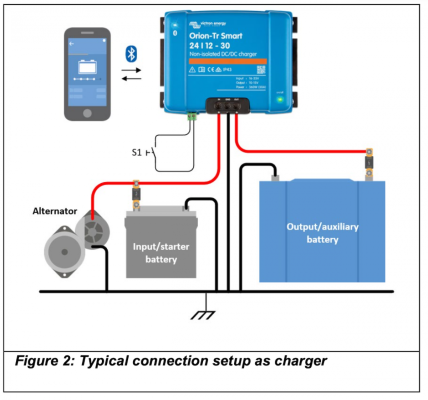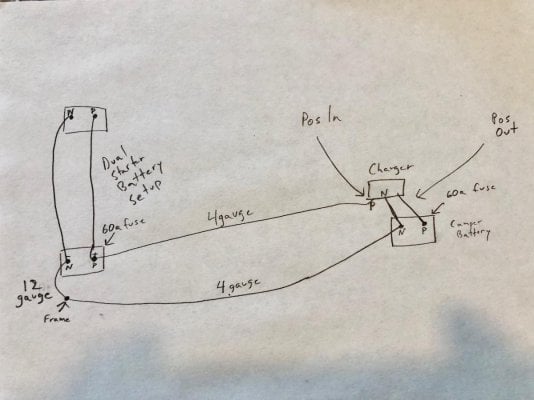jhickok
New Member
Hi folks,
I ended up with the Non-Isolated version of the Victron Orion-Tr Smart 12/12-30A DC-DC Charger because I rushed in ordering, and I thought "no problem," this one is okay (based on what I had read).
Now I am wondering, is it okay for a truck/camper setup? Or do I need the isolated version? I did email Victron, but wanted to set this up today and might not hear from them for a few days until the work week starts. Is this non-isolated version strictly for things like vans, RVs, and boats, that clearly share the same chassis... while a cabover camper actually sits on top of the truck?
I have a hard-side camper sitting on the bed of a Ram 2500 4x4 Diesel. Do they share the same negative return? Ground? Since they are sitting together... or are the negatives separate systems?
Can I still use this non-isolated version of the DC/DC charger, which has a positive input and a positive output, but ONLY ONE negative port (see photo attached)? Would the charger just connect to the ground negative for the camper? Do I have to run a negative from the truck's starter battery and connect it to the camper's negative system somehow?
Here is the diagram straight from Victron for this non-isolated model (attached). Also linking to the manual here.
I ended up with the Non-Isolated version of the Victron Orion-Tr Smart 12/12-30A DC-DC Charger because I rushed in ordering, and I thought "no problem," this one is okay (based on what I had read).
Now I am wondering, is it okay for a truck/camper setup? Or do I need the isolated version? I did email Victron, but wanted to set this up today and might not hear from them for a few days until the work week starts. Is this non-isolated version strictly for things like vans, RVs, and boats, that clearly share the same chassis... while a cabover camper actually sits on top of the truck?
I have a hard-side camper sitting on the bed of a Ram 2500 4x4 Diesel. Do they share the same negative return? Ground? Since they are sitting together... or are the negatives separate systems?
Can I still use this non-isolated version of the DC/DC charger, which has a positive input and a positive output, but ONLY ONE negative port (see photo attached)? Would the charger just connect to the ground negative for the camper? Do I have to run a negative from the truck's starter battery and connect it to the camper's negative system somehow?
Here is the diagram straight from Victron for this non-isolated model (attached). Also linking to the manual here.


